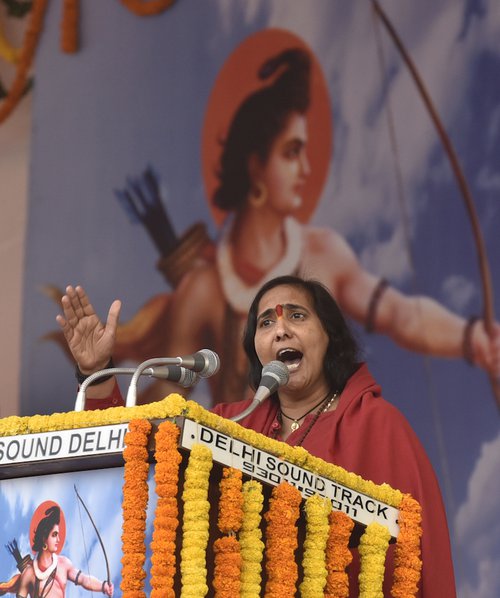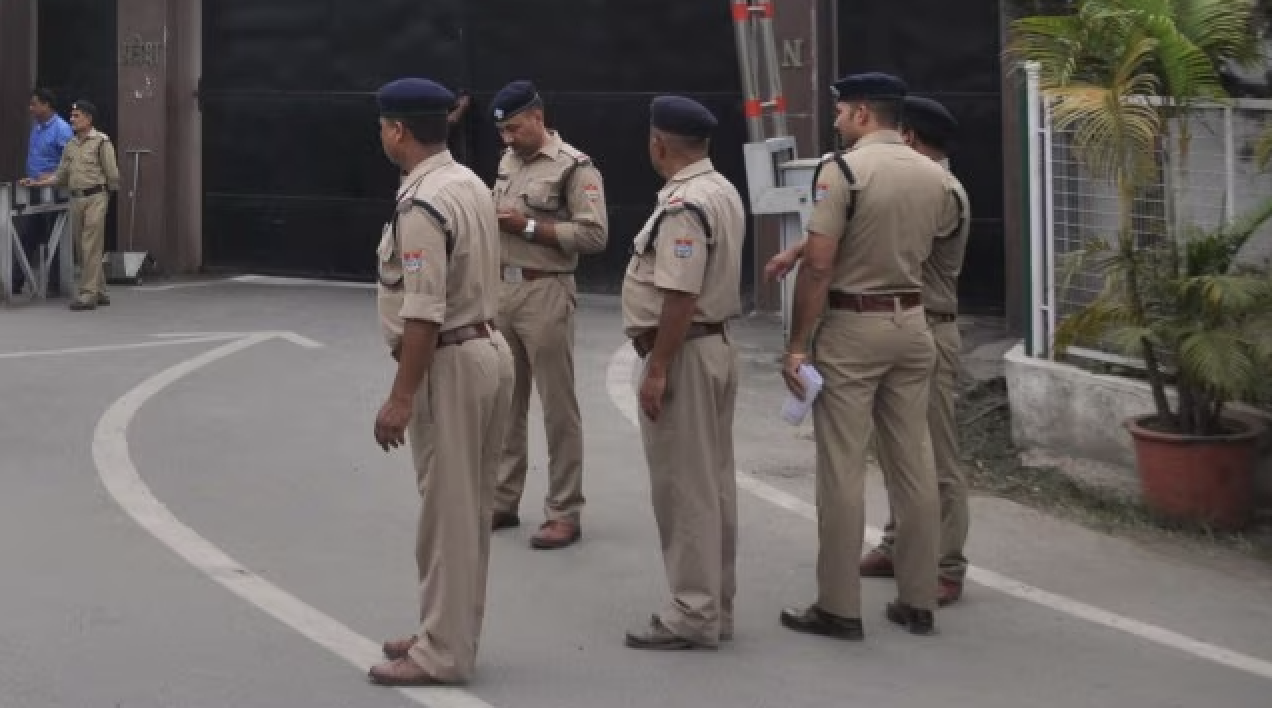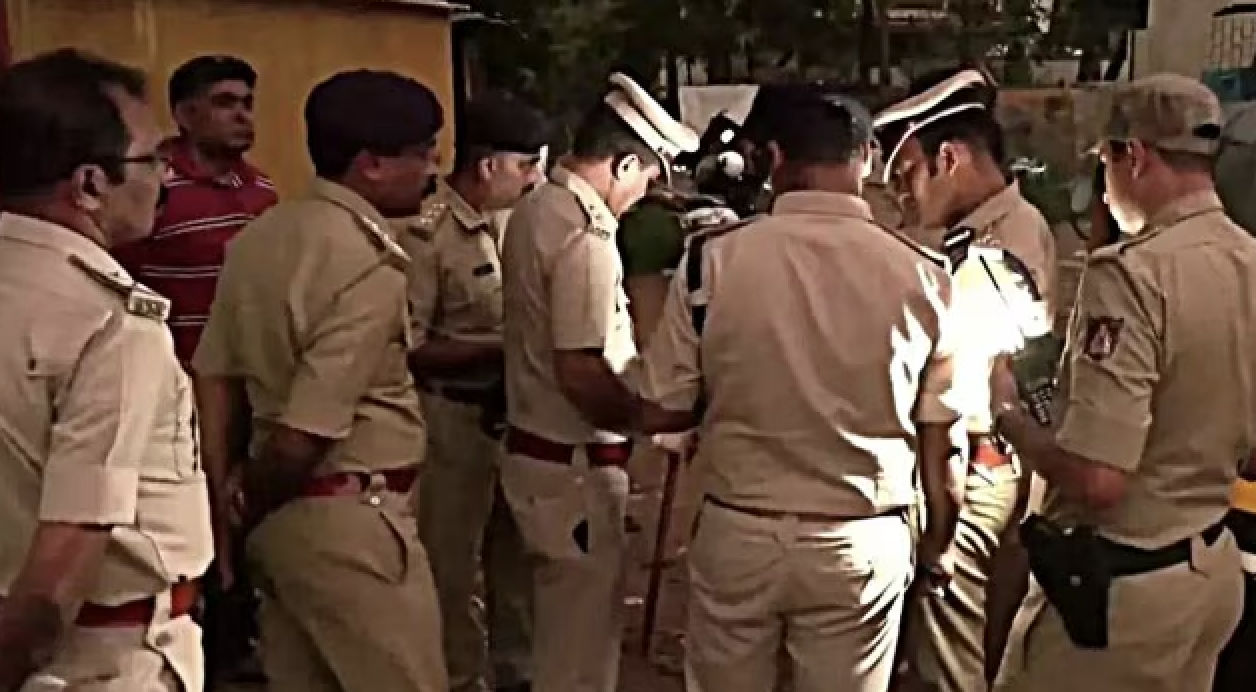On the evening of September 5, 2017, barely two steps away from her residence in southwest Bangalore, journalist Gauri Lankesh was shot dead by two assassins on a motorbike who fired at her close-range before fleeing the scene. According to police reports, she was shot with the same gun, used back in 2015, to kill writer and activist MM Kalburgi, another ‘enemy of the nation’ in the eyes of the governing Bharatiya Janata Party (BJP).
Lankesh was the editor of the ‘Gauri Lankesh Patrika’, a tabloid which earned the status of an ‘anti-establishment’ publication under the BJP-led government. Gauri’s body lying in a pool of blood, provided yet another instance that evening of how ‘the right to dissent is being threatened’ under the watch of an ideology responsible for the death of Gandhi. Meanwhile, as protesters held candlelight vigils to protest the killing, the BJP and its parent organization Rashtriya Swayamsevak Sangh (R.S.S.), a powerful Hindu-nationalist paramilitary group took to social media celebrating the death of yet another fearless woman by justifying her murder as something she called upon herself by criticizing the ideology of the Sangh Parivar.
The Narendra Modi-led Bharatiya Janata Party (BJP) government ostensibly campaigned in favour of Vikas (Development) and provided a vision of a “New India” to which the country responded positively in the 2014 general elections. The silver-tongued Modi pitched every controversy against the establishment – corruption, demonetization, rising communalism – in terms of the relentless instrumentalization of nationalist sentiments, sharing a penchant with the extreme right’s view of the nation. In his campaign he deployed a populist strategy attempting to link the nativist ideology of his party to popular aspirations, fears and prejudices, including gendered folk and religious visualizations of a “New India” that subscribes to the BJP idea of divisive nationalism.
He positioned himself as an aam admi (common man), claiming to be an erstwhile chai-wala (tea-seller), whose sole purpose was to serve the country as a chowkidar (watchman). His claims conjured a clear ideological repertoire – one of a Hindu Rashtra (Hindu polity) that demonises religious minorities (especially the Muslims) as evil ‘others’. Caterina Kinnval points out that what Modi has in common with other populists is the ability to unite narratives of nativism – expressed in nationalist terms, and the knowledge that sentiments, images and symbols, rather than rational argument or accurate history, can galvanize individuals by offering his followers what Pankaj Mishra refers to as, “a fantastical vision of making India great again.” He proudly proclaims he is a Hindu Nationalist whilst remaining silent in the face of a growing anti-secular cyberspace that abuses liberals as “liber-tards” (abbreviation of Liberal retards).
However, what significantly changed in the 2019 general election campaign was the call to revive Hindutva ideology within the social and political sphere, to define both belonging and un-belonging to the nation. Modi’s nationalism captures the zeitgeist of a masculine patriarchal past within the domains of spatiality, historicity, and gender. BJP’s Hindutva asserts masculinity and masculine desire as a collective national consciousness reinforcing its sense of honour in protecting the nation (imagined as a feminine entity).
BJP’s Hindutva asserts masculinity and masculine desire as a collective national consciousness reinforcing its sense of honour in protecting the nation (imagined as a feminine entity).
Gendered contestation
This form of identity contestation involves a long and complex history of creation and marginalization of the ‘other’. Drawing on Benedict Anderson’s definition of the nation as an ‘imagined’ creation, the principal doctrine of nationalism and patriotism in shaping today’s India co-exists with the formation of an ‘other’ who is fundamentally utilized to (re)enforce the bonds between ‘us’, wherein nations are “constitutive of people’s identities through social contests that are frequently violent and always gendered”.
Such nationalism draws heavily on gendered-nationalist sentiments to oppress and subjugate the Other by indulging in a power-play of self-victimization, wherein the crushing of dissent is celebrated. Situating gender within the framework of nationalism plays a key role in constructing the Other in the Symbolic Order in which women’s physicality becomes subject to male desire, and therefore a locus for Othering. Cas Mudde identifies nativism, authoritarianism, and populism as three core elements of far-right politics embedded in historicity and gender, which not only invoke nationalist sentiments but in fact, dehumanise, alienate and denigrate women, like Lankesh, as the Other.
Feminist scholars such as Kamla Basin, Ritu Menon, and Urvashi Butalia, have already done extensive work on the various forms of ideologies inflicted upon women by their male-kin that strongly validate the position of women as carriers of national honour and purity. They suggest that the radical right’s homophobic, misogynist attitude has gained support among many women, leading to the hyper-normalization of the ‘macho-culture’. Women are indoctrinated into perceiving themselves as weak and subordinate to their male kin, to an extent where thoughts of freedom are loathed.
Women are indoctrinated into perceiving themselves as weak and subordinate to their male kin, to an extent where thoughts of freedom are loathed.
However, the BJP’s female supporters and activists don’t observe such ‘machismo’ as derogatory, rather they seek to preserve such ‘patriarchy’ as a way of renewing social structures and cultural traditions – an organized form of hyper-conservative nationalism that promises a ‘golden past’ to its ignored, loyal, yet passionate supporters. This past, or future, is one where women are solely validated through their roles in the physical and social reproduction of the nation.
Militant women
While motherhood may be associated with nurturing bodies and minds, in contemporary Hindu nationalist discourse it also acquires a more active obligation to protect. One high-profile personality born out of India’s radical right in this sense is Sadhvi Pragya Thakur, a Hindu-nationalist, prime suspect in the 2008 Malegaon bombing. Thakur contested the Lok Shaba elections in Bhopal, Madhya Pradesh, on the BJP ticket, while on bail on medical grounds. The word “Sadhvi” in her name, translates to holy-woman, a saffron-cladded sanyaasini (female saint) who propagates traditional beliefs on racial purity, machismo, while spreading hatred against minorities – a tactically driven right-wing propaganda. Thakur is also an active member of Vishwa Hindu Parishad’s women’s militant wing, Durga Vahini. Interestingly the name of the organization, Durga Vahini, refers to the goddess Durga, a mythological feminine warrior who was created to defeat a demon called Mahishasura. The legend describes the extreme aura and power of the goddess to which the devil finally succumbed, and its mobilization in this context supports women’s militant engagement in the nationalist cause as a manifestation of their caring, protective role.
One of the founders of this organization, Sadhvi Ritambhara, was particularly popular for her audio recordings, found in cassettes spread across the country propagating a rhetoric of feminine power to eliminate the evil force – a term directed at India’s Muslims. Sadhvi Ritambhara and the ideology that underpinned the work of Durga Vahini, back in 1992, were crucial in instigating the Hindu-Muslim riots over the Ram Janmabhoomi-Babri Masjid controversy. Such divisive communal narratives were utilized to undermine the memories of a ‘shared past’, and instead generate realities that denied a past history of coexistence. While pursuing an identity politics accentuating sexism, racism and inter-caste animosity, women like Sadhvi Pragya Thakur, Sadhvi Ritambhara Devi, and Uma Bharti (another founder of the Durga Vahini), to name but a few, are products of a belief system imbued with the ideologies of patriarchy. But they reserve a space for active, militant women to fight for it.

Overall, however, such activists share an affinity with the views of Hindu majoritarianism that propagate a ‘macho-culture’ in which masculine men (read, brave sons of the nation) protect the weak and vulnerable ‘feminine’ nation. They too nurture their penchant for an ideology that stereotypes women as role-model daughters, wives and mothers, without much scope to develop their individuality. Female Hindu activists within the nationalist movement, paradoxically work to spread the message that Hindu women should produce more babies, thus turning motherhood into a key element of a nationalist agenda that wrests control of female sexuality away from the women themselves and turns them into mere instruments for the aggrandization of the nation.
Majoritarian torchbearers
As Amrita Basu points out in her “Hindu Women’s Activism in India and the Questions it Raises”, “motherhood imagery” is a ‘staple of all nationalist movements’, bringing women’s bodies under the strict surveillance of their male guardians, much as the feminine mother nation is guarded by the masculine state.
In the pursuit of national honour, the demise of women’s identity seems imminent in a discourse of militant nationalism that either takes control of women’s bodies as vulnerable, or enacts Hindu mythological archetypes of strong womanhood as protectors of the nation, albeit a nation underlined by a patriarchal order. This promotes the virile, warrior-like image of a woman who fights against evil forces to liberate the nation, while fantasizing her physicality by sensually depicting the Mother nation with all her ‘grace and beauty’ as imagined by the “brave” sons of Bharatmata.
Women like Sadhvi Pragya Thakur are the torchbearers of a society where the idea of empowerment lies in promulgating a discourse that demonizes the other. Instilling fear among the minorities and committing horrid atrocities against them is considered emancipatory in this strictly majoritarian set-up. The segment of the society that applauds them, targets “national degenerates” like Lankesh, in their pursuit of a perpetual tyranny of the majority over the minority.
Gauri Lankesh vs. militarized empowerment
The idea of faith-based gendered nationalism has taken a problematic turn with the rising discontent of its critics in civil society. Women within civil society who advocate liberal and secular paradigms of nationhood have begun to create a women’s resistance against the ongoing cultural and religious discourse that denies women basic rights, agency and their own self-determination. Lankesh was one such fearless woman of rare standing who relentlessly worked with the victims of mob-lynching and defended religious and caste-based minority rights. In her tabloid Gauri Lankesh Patrika, she addressed difficult questions to the establishment, holding those in power accountable for every lynching of minority members, every attack on human-rights activists, or the pro-minority intelligentsia – feminists, liberals, and communists.
While Amnesty International featured Gauri Lankesh as “India’s brave” , the space for dissent over which Lankesh shared her concerns is nevertheless shrinking with the growing female participation in the Hindutva movement. Sikata Banerjee sees this commitment to ‘militaristic’ political participation in protests, attacks and lynching activities as a form of cultural anxiety. Paola Bacchetta argues that these right-wing ideologies are not emancipatory, but rather provide an illusory sense of empowerment through militaristic metaphors which dissolve the space between feminine warrior goddesses and women icons, thus turning ‘mothers’ into ‘warriors’.
This masculine turn of women’s personas within the Hindu right-wing has, in fact, militarized the notion of ‘empowerment’ to an extent that leads to a loss of empathy for those who had once gained India its freedom. One such incident took place earlier this year, as the country headed towards its seventeenth general election. The Hindu Mahasabha’s national secretary Miss Pooja Shakun Pandey shot at an effigy of Gandhi in Aligarh, Uttar Pradesh, on January 30, 2019, to mark the anniversary of his death, and garlanded the statue of his assassin Godse instead.
Such incidents warn us that the country has begun down a slippery slope to fascism, a fascism underpinned by patriarchal narratives ranging from those defining women as culturally tamed second-class citizens to those applauded for their active militancy in the service of the ideologies of ‘the true nation’.
The apparent paradox in this exaltation of both passivity and submission on the one hand, and activism and militancy, on the other, and the ways it is resolved or neutralized in Hindutva ideology, requires a more counter-intuitive approach to the positioning of gender within the movement. At the same time, outside the Hindutva movement, women participating in civil society activism and challenging these sanctioned roles are cast in the role of degenerate and expendable ‘others’.
This article first appeared on opendemocracy.net






